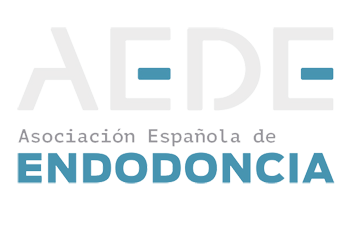Vol. 33 - Núm 4
Estudio comparativo del área de corte de los sistemas de instrumentación F360, i-Race, Protaper Next y Reciproc al microscopio estereoscópico con AutoCAD
Por: Jorge Rubio, José Ignacio Zarzosa, Antonio Pallarés
Resumen del artículo:
RESUMEN
Objetivos: Comparar área de corte, mantenimiento de anatomía y zonas no instrumentadas de F360, i-Race, P.Next y Reciproc con calibre #25.
Material y métodos: 120 dientes unirradiculares rectos con un conducto (n=30). La LT fue calculada con lima H #10 dejándola al límite del foramenapical y restando 0,5mm. Dientes seccionados con pieza de mano y disco diamantado. Los cortes se observaron al microscopio estereoscópico. Losdientes se reconstruyeron con lima H #10 y superglue. Área de corte y mantenimiento de anatomía se estudiaron con AutoCAD, y zonas no instrumentadascon microscopio y AutoCAD. Análisis estadístico se realizó con Test de Levene, ANOVA, de Welch, de Tukey, de Bonferroni, de Games-Howelly Chi-Cuadrado de Pearson.
Resultados: Varianzas iguales (Test de Levene, p>0,05) en tercios pudiendo utilizar ANOVA y observando diferencias significativas (p<0,05). Diferenciassignificativas entre F360 y P.Next y Reciproc en coronal, entre Reciproc y F360 en medio, y entre P.Next e i-Race y Reciproc en apical (tests de Tukeyy de Bonferroni, p<0,05). Globalmente no se asumieron varianzas iguales y se utilizó el Test de Welch (p<0,05). Diferencias significativas entre F360 yReciproc (Games-Howell, p<0,05). En el mantenimiento de la anatomía, se encontraron diferencias significativas (Chi-Cuadrado, p<0,05). En relacióna las zonas no instrumentadas, no existieron diferencias significativas (Chi-Cuadrado, p<0,05).
Conclusiones: Reciproc fue superior en el área de corte. P.Next y Reciproc fueron más eficaces en el mantenimiento de la anatomía. Respecto a las zonasno instrumentadas, no existieron diferencias significativas.
PALABRAS CLAVEAutoCAD; Conformación de conductos; Secciones; Sistemas rotatorios.
ABSTRACT
Aim: Compare the cutting area, maintenance of anatomy and non-instrumented areas of F360, i-Race, P.Next and Reciproc with size #25.
Methods: 120 straight single-rooted teeth with a canal (n=30). The LT was calculated with H-file #10 leaving the limit of the apical foramen and subtracting 0.5mm.Teeth were sectioned with piece of hand and diamond disc. The sections were observed at stereoscopic microscope. The teeth were reconstructed with H-file #10 andsuperglue. Cutting area and maintenance of anatomy were studied with AutoCAD 2013, and non-instrumented areas with microscope and AutoCAD. Statisticalanalysis was performed with Levene´s Test, ANOVA, Welch, Tukey, Bonferroni and Games-Howell and Pearson´s Chi-square.Results: Equal variances (Levene test, p>0.05) in thirds and can used ANOVA and significant differences were observed (p<0.05). Significant differences betweenF360 and P.Next and Reciproc in coronal, in middle between Reciproc and F360, and in apical between P.Next and i-Race and Reciproc (tests of Bonferroni andTukey, p<0.05). Globally, equal variances were not assumed using the Welch Test (p<0.05). Significant differences between F360 and Reciproc (Games-Howell,p<0.05). In maintenance of anatomy, significant differences were found (Chi-Cuadrado, p<0,05). Regarding non-instrumented areas, there were not significantdifferences (Chi-Cuadrado, p<0,05).
Conclusions: Reciproc was higher in the cutting area. P.Next and Reciproc were more effective in maintenance of anatomy. For non-instrumented areas, there werenot significant differences.
KEY WORDSAutoCAD; Shaping ability; Sections; Rotary systems.






